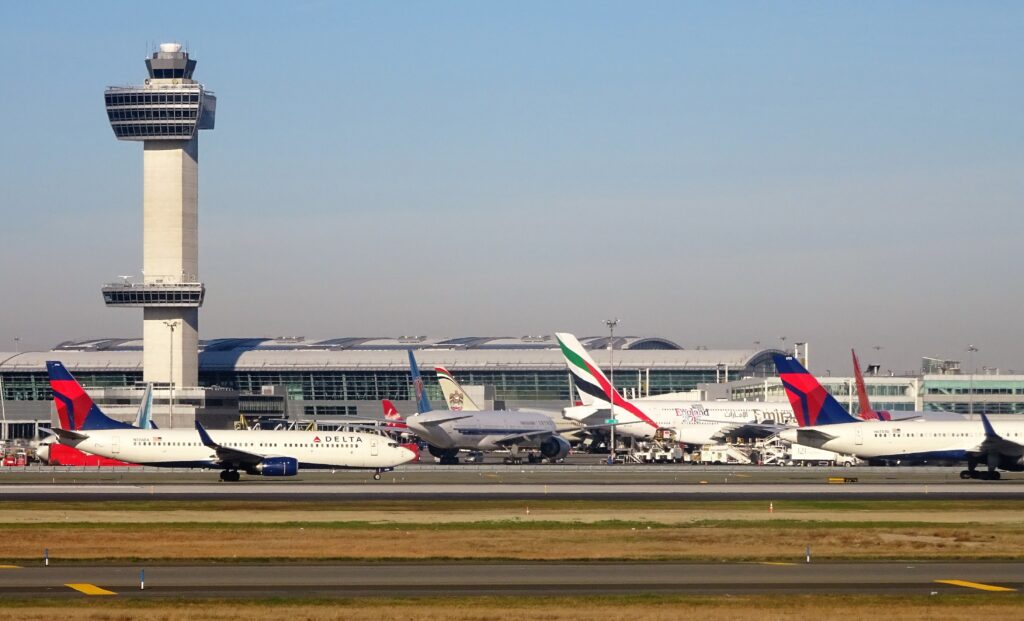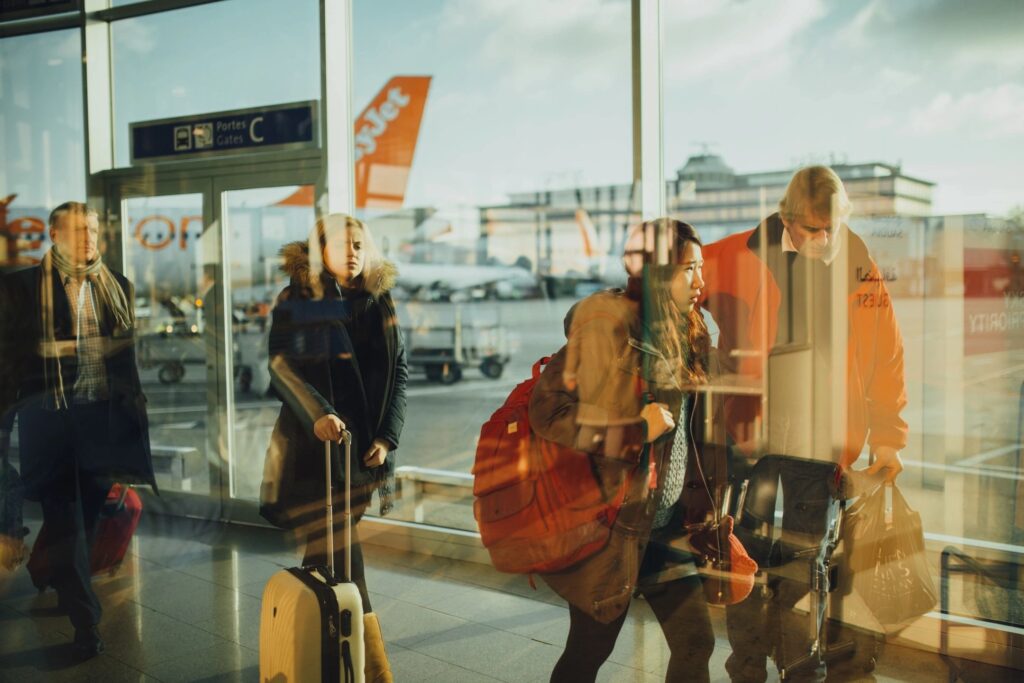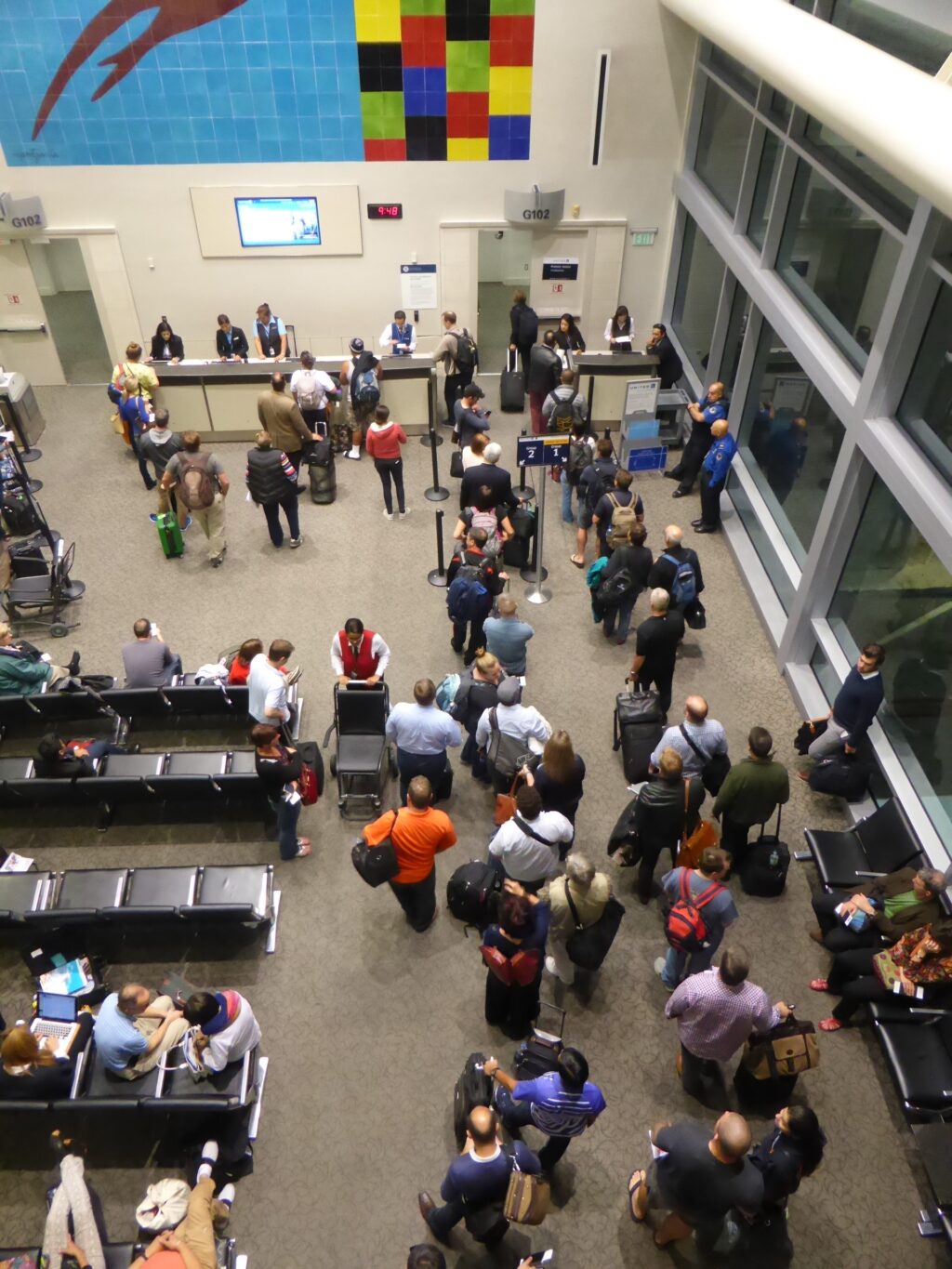 As the coronavirus shows signs of subsiding, airline executives are making rosy promises that the business of air travel will soon rebound. These optimistic views must be seen for what they are; the best possible spin of what is in reality, an existential threat.
As the coronavirus shows signs of subsiding, airline executives are making rosy promises that the business of air travel will soon rebound. These optimistic views must be seen for what they are; the best possible spin of what is in reality, an existential threat.
Modern air travel has boomed based on a several decades-long marketing plan of enticing customers with cheap tickets and and a “why not?” sales pitch. Why not pop across the country to hear your favorite rock band? Why not hop on the red-eye for a morning sales call and be home in time for dinner? Why not escape a rainy weekend for snorkeling in some sunny locale?

Nowadays the question many travelers are asking is “why would I fly?” Airlines need a plan for that.
American Airlines chief executive Doug Parker explained, “The reason people aren’t flying is because they’re not leaving their homes and because corporations aren’t having people come to work. Once those things happen, that’s when demand will recover. We’ll make certain when demand recovers, we’ll make passengers feel safe.
Many other airline bosses are delivering the same message in public message but privately can they really believe that? The modern airline business model relies on several nonnegotiables; low fares, crowded cabins and heavy and repeated usage of airplanes. It worked magnificently in the pre-corona world. It is inconsistent in a world of face shields, gloves, sanitizer and widespread fear of contagion.
Yes, travelers have been grumbling about the hassle of flying for years, all the while buying airline tickets and boarding planes at an ever increasing rate. But there’s a big difference between enduring discomfort and petty indignities as a way to get from A to B and the fear that your fellow traveler could be an inadvertent killer.
“The probability that healthy individuals will interact with one or more individuals who are infected but may not know increases exponentially as the number of people passing through the airport increases,” said Hilary Godwin, dean of the University of Washington School of Public Health in testimony to the U.S. Senate last week.
#PAE is rolling out a new fever detection system. This technology, developed by @AthenaSecure, is non-invasive, non-contact and alerts personnel when a passenger of staff member has a fever. We care about your health! For more info visit: https://t.co/RfZE52SaWc pic.twitter.com/D1bqL6Ic6L
— Fly Paine Field (@FlyPaineField) April 29, 2020
Professor Godwin’s list of recommended practices include limiting access to the airport with body temperature screening and enforcing social distancing at all airport facilities including rail lines, bag claim, check in and boarding areas. On board, travelers and flight crew would wear masks throughout the journey, some seats would be left open to assure social distancing, and high touch surfaces including those in bathrooms would be cleaned during flights. The entire plane would get a thorough disinfection after landing.
 Few would argue with the instructions in theory, (though the usefulness of home made and fabric masks is being debated within scientific communities read more here and here.) In practice, discomfort plus fear equals less people willing to fly. And Ryanair’s $21 fares and Frontier’s 50% off sale won’t be able to counter that.
Few would argue with the instructions in theory, (though the usefulness of home made and fabric masks is being debated within scientific communities read more here and here.) In practice, discomfort plus fear equals less people willing to fly. And Ryanair’s $21 fares and Frontier’s 50% off sale won’t be able to counter that.
Airlines willing to adapt to a post-corona world could accommodate social distancing with new procedures that swap priority boarding with back to front boarding to minimize passengers passing each other. The elimination of middle seats with temporary and inexpensive trays could easily turn a three seat row into a two seat row with window and aisle seating only. JetBlue’s CEO Robin Hayes says his airline is already keeping its middle seats empty. Others are offering middle seat empty “where possible”. This means a Boeing 737 or Airbus A320 would go from the 180-200 range to 120 seats more or less. An airline captain with another carrier told me such a plan is possible but “flying is going to get more expensive.”
Assigning flight crews to more robust in-flight cleaning tasks is also doable especially while in-flight services are reduced. With so many flights cancelled, turnaround times at the gate have expanded allowing for the heavy disinfection of airplanes the professor recommends following each flight. Time, airlines have. The ability to pay for these new procedures, well that’s another matter.
Already the U. S. airlines are calling for government to oversee passenger contact tracing should it become a requirement and the International Air Transport Association makes the point that if governments don’t coordinate on health requirements, restarting international travel will become much more difficult.
 Where public health and sanitation goals intended to encourage a return to flying could backfire is with passengers, not because they don’t want them but because these efforts are burdensome. Travelers will have to transit from the affordable “where you want, when you want” convenience of pre-corona and the restrictive, scary and likely more expensive air travel of tomorrow.
Where public health and sanitation goals intended to encourage a return to flying could backfire is with passengers, not because they don’t want them but because these efforts are burdensome. Travelers will have to transit from the affordable “where you want, when you want” convenience of pre-corona and the restrictive, scary and likely more expensive air travel of tomorrow.
Then there are the hundreds of millions of people around the world who lost their livelihoods, many in countries where government assistance is not robust. This locks a considerable number out of discretionary travel. Even those inclined to take to the air are not likely to emerge from their homes and carry on as if the world hadn’t come to a screeching halt.
That means that the business model that relies on the marketing equivalent of a supermarket impulse purchase, isn’t going to work in a fear-filled world. For the airline industry to survive, airline folks need to forget what used to be and design a new normal.
JetBlue’s Robin Hayes seems to realize that already.
“We’re going to see some things change for good,” Hayes predicted.
For the sake of the industry, I hope he’s right.

Author of The New York Times bestseller, The Crash Detectives, I am also a journalist, public speaker and broadcaster specializing in aviation and travel.









“On board, travelers and flight crew would wear masks throughout the journey, some seats would be left open to assure social distancing, and high touch surfaces including those in bathrooms would be cleaned during flights. The entire plane would get a thorough disinfection after landing.” Useful recommendations, particularly the last one but I doubt if any US commercial airlines would do most of those recommendations for more then a few months, if that. I flew from PDX to JFK, 11 days later from JFK to PDX–on Jetblue. I didn’t stay in the city but on LI. By the time I left, pretty much everything but the beaches had been shut down in the area I was in. A service I used stated the job they did for me was probably the last one they’d be doing before closing down. I repeatedly contacted Jetblue w/requests for specific information regarding what precautions they were taking–the response was generalities. Jetblue doesn’t clean between flights I’ve taken the above listed flights for at least 7 years and it’s always, one set of pax gets off, 10 minutes later, my flight’s pax are boarding. Same for UA (flown UA to CA). After becoming ill twice after flying, I started using disinfectant wipes or I was PAYING to fly on a plane whose seat I had to clean to avoid becoming ill. since I had a row of 3 seats to myself on that last JFK to PDX flight, I used disinfectant wipes to wipe all 3 seats.
I find it revealing or perhaps it’s just business as usual that the airlines are pushing for passenger responsibility for precautions: pax must wear masks (airlines aren’t suggesting they’ll provide free ones for pax, are they? Of course not), pax must undergo thermo scans. The airlines? Last I heard all Jetblue said it did was (allegedly, it’s not like I got to check) was disinfect the planes in use, once a day. Since the FAA has repeatedly stated it’s not in charge of plane cleanliness/that aspect of ‘safe’ flying, who’s going to check? Even if the FAA did accept responsibility, it wouldn’t have enough people to do regular unscheduled inspections.
As for the airlines now having time to clean (cleaning is NOT the same as disinfecting–you need a clean surface to make disinfection effective, but it’s ONLY disinfection that rids the surface of the novel corona virus), I wouldn’t expect them to be will to spend down time spending money to keep pax safe if it’s not mandated and planes regularly checked. My reasons? Well, on March 22, my plane to PDX left about 2 hours late. Somehow, the pilots didn’t find out that a “radio” wasn’t working properly until all the pax had boarded (flight was already late, it usually does run late up to 45 minutes late). By then, hundreds of flights had been canceled so there were many fewer planes flying out of JFK. Even soi, Jetblue was STILL unable to check a plane’s equipment & make sure everything was ready for flying before scheduled departure. If JB can’t even manage that, what would provide the incentive to clean the plane between flights? When it can so easily (it’s not like any part of the federal gov’t or a majority of Congress will act to protect passengers or hasn’t for years) shift that burden to passengers. Pax “should” appear to be healthy when they board–even though it’s common knowledge or should be by now that people may be contagious before showing any symptoms and a % remains asymptomatic yet contagious. But lets forget about reality if it means claiming to be playing it safe by making pax jump yet another hurdle.
Masks are useful but even more useful is keeping pax at least a seat apart AND the airlines disinfecting (not only cleaning but disinfecting) planes between every flight. I’ve read that the airline pilots ass’n as complained (current complaints) regarding airlines–even now–not adequately cleaning or disinfecting planes. Just picking up trash doesn’t do it. Real cleaning and use of disinfectant misting machines does.
finally, babies fly too, would babies be required to wear masks? Small children (I wonder how long those masks would stay on)?
Personally, I’m thinking about buying some face shields, as it’s not so easy to breathe through masks (or not the ones I’ve been able to make) and people occasionally have difficulty understanding what I say (my normal voice is fairly quiet). Face shield would protect my eyes as well as my mouth & can easily be cleaned/disinfected after each use. I’d look even weirder but given that I get weird looks already in my non- mask compliant part of western OR, it wouldn’t be anything new.
Very thoughtful article.
“An airline captain with another carrier told me such a plan is possible but “flying is going to get more expensive.”
I would suggest, however, that much higher fares — as a means of offsetting reduced revenues from lower passenger loads — will prove to be counter productive, because it violates one of the “Iron Laws” of economics: Namely, “the higher the price of a widget, the fewer widgets that will be sold.”
To offset those lower revenues per flight, the employees of the airline may have to accept lower wages and less expensive benefits, if they want to remain employed in the airline business. Of course labor union leaders will sound outraged at such a suggestion by any airline management. However, if they truly want to protect as many jobs of their members as possible, they will have to re-negotiate their labor contracts to enable more employees to share in the reduced amount of available revenues that are inevitable in this “New Normal” airline industry.